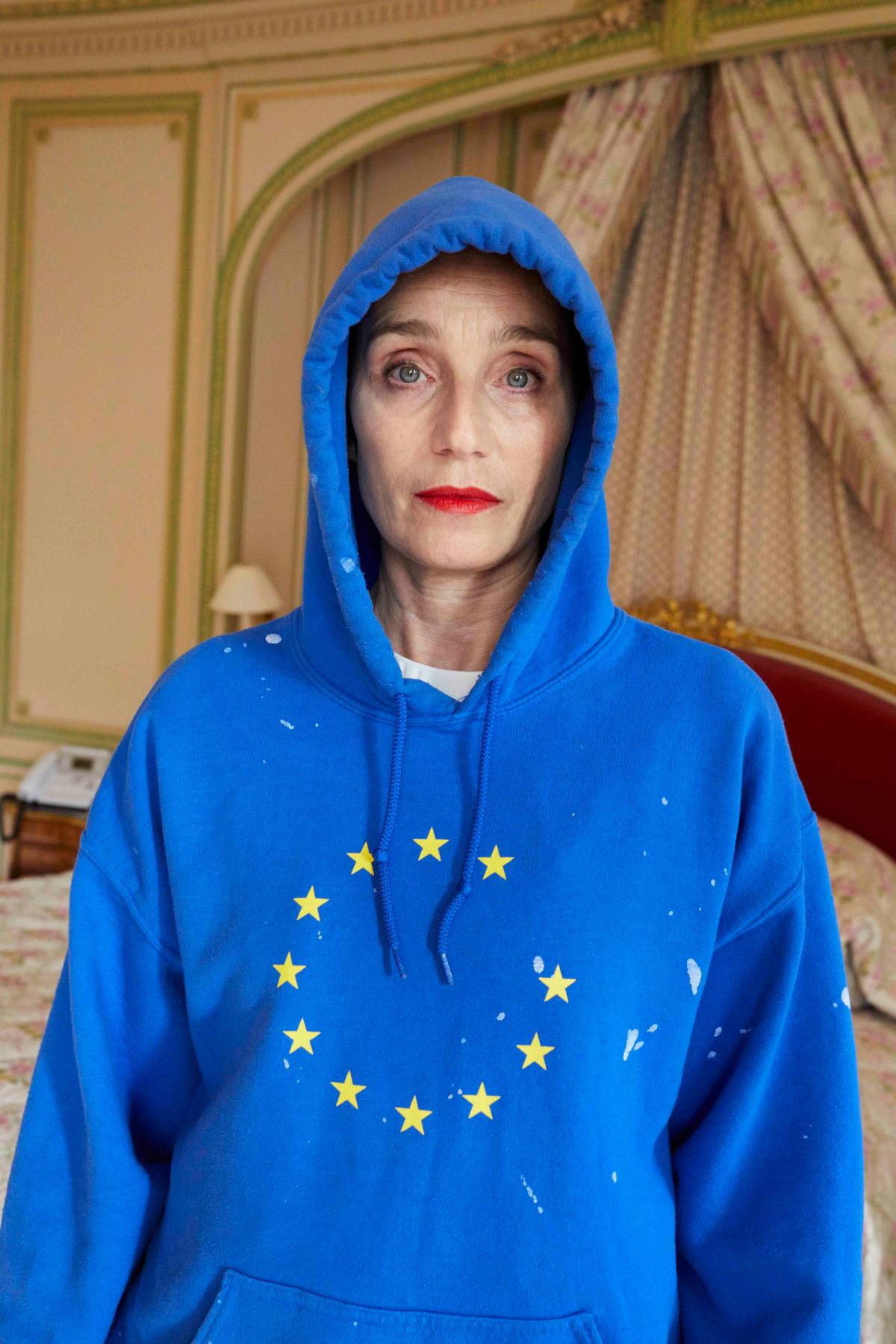As the British public heads to the polls today to vote in crucial European Parliament elections, more than 30 artists are taking part in a two-day exhibition at Galerie Thaddaeus Ropac in London in defiance of Brexit (until 23 May).
Under the banner United Artists for Europe, Daniel Buren, Marina Abramovic, Marc Quinn, Valie Export and Antony Gormley are among those who have donated new and existing pieces to the exhibition and benefit auction. Together, the works are expected to fetch as much as £1.5m when they go under Simon de Pury’s hammer at Hotel Café Royal on 3 June.
The funds raised will go towards cultural projects across the bloc including Artagon Museum, billed as the first museum dedicated to emerging artists in Europe. Its collection of works by less-well known practitioners is due to be shown in venues throughout Europe, starting in the UK in 2020. “It is a new concept of mobile museum, which will travel from London to Kiev,” says Sophie Wiesenfeld, the founder of the Hexagon Society, one of the organisations behind United Artists for Europe.
The group also considered donating to the fire damaged Notre Dame cathedral in Paris, according to Wiesenfeld. “[But] everyone around the world donated so generously, our contribution would have been a drop in the ocean,” she says. “We also wanted to show that Europe does not only represent a bank note. It is not only economically or politically oriented, Europe is literature, culture, music.”
Speaking at the exhibition preview on Tuesday evening, the British-Israeli industrial designer and artist Ron Arad says he will do what he can “to prevent this disaster called Brexit”. He has donated a 2008 sculpture, Gomli (painterly), which bears the imprint of a “missing figure, or invisible person” and is expected to fetch £80,000 to £120,000. “I like people and cities, but I don’t like nationalities and borders, which is what Brexit is about,” Arad says. “Who knows what will happen. Not even [BBC journalist] Laura Kuenssberg knows.”
The Belgian artist Jan Fabre, who has contributed a shimmering diptych made from jewel beetle wings (est. £80,000-£120,000), says in a statement that he fears Europe will end up at war if the European community collapses. “All these European extreme nationalists who want to break up the European community have a lack of memory of what happened in history. We have to defend the European community simply for one fact: that historically we have the longest period of peace ever in Europe,” he says.
The British artist Shezad Dawood acknowledges the current system may not be perfect, but says “it’s the best one going”. He adds: “It really is a question of how do we improve things, rather than race to the bottom in a global dash towards greater wealth inequality and the erosion of workers’ and environmental rights that have taken centuries to be recognised. Which is, after all, the not so secret intent of most right-wing and regressive parties, autocrats and dictators the world over.”
Dawood's mixed media work, Knotted plastic bags containing presumably native earth, Euro banknote and torn pharmaceutical packaging (2017), is estimated to sell for between £15,000 and £20,000.
Other artists, such as the British potter Grayson Perry, suggest the liberal arts classes need to start engaging with the right-wing. “I always thought it was part of our job as artists to escape the orthodoxies of society,” Perry says. “Perhaps now is a good time for artists to think ‘Who is it that I am making art for?’ Are we to continue preaching to the converted, virtue signalling to the home crowd?” The artist is selling his textile piece, Marriage Flag (2018; est £1,500-£2,500).
The curators Tancrede Hertzog and Leopold Legros say the idea for the project came about after discussions with the French philosopher and film-maker Bernard-Henry Lévy, who last night performed the finale of his play, Last Exit Before Brexit (now Looking for Europe), at Ropac’s gallery. As the crowd stood to applaud him, Lévy implored: “Please, please, please remain.”
While Britain’s political system continues to fracture over Brexit, it seems the art world, at least, stands united.


